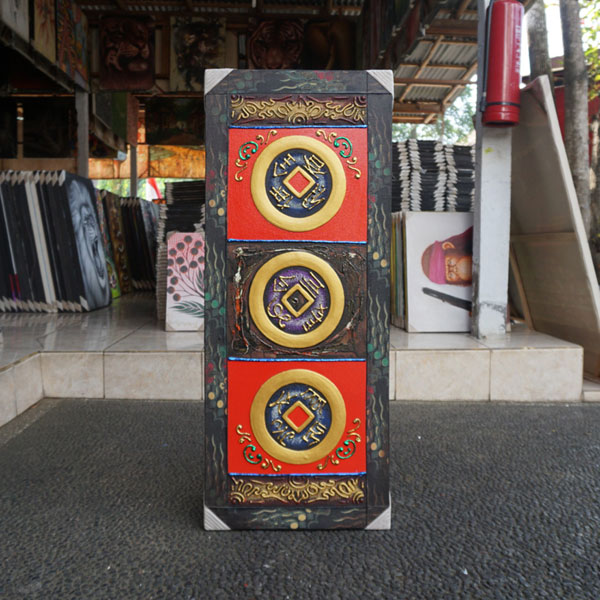Chinese Coins Painting-DSW5-1405
Description
Chinese Coins Painting
Chinese Coins Painting. Uang Kepeng is a coin or coin with a hole in the middle. In the past, money called pis bolong was a means of payment in Bali.
History of The Chinese Coins
The Balinese Chinese Kepeng is made of metal. The same material is used to make gamelan. In addition, there are those made of brass or bronze. His writings vary. Some of them are in the form of Chinese characters or just pictures. Besides that, kepeng in offerings cannot be separated from the influence of China on Bali. In addition, the relationship between Balinese and immigrants occurred in classical medieval times. That is around the year 900-1250 AD. History records that Patih Gajah Mada was appointed Maha Patih in 1334 AD Gajah Mada took the Palapa Oath in 1343 AD In the same year, Gajah Mada and his troops conquered Bali. So that it becomes the first conquered area. That is, Bali’s trade with China occurred before Majapahit conquered Bali.
The writing or picture shows when the Uang Kepeng was printed. Pis kopong oldest ever found in (7-9 AD). However, the average pis kopong is found in Bali. In addition to functioning as a complete offering. In the past, Chinese kepeng money also served as the legal medium of exchange in Bali. That was true since the Majapahit era until the Dutch colonial era.
The use of Chinese kepeng money ended around 1930 AD Even though the Dutch colonial government tried to ban pis kopong. However, they were powerless. Because the Balinese insist on using it. As a means of changing goods and services between them. Money kepeng is used as a complement to Hindu religious ceremonies. In its development, Uang Kepeng is increasingly difficult to obtain. Therefore, it is only used in important ceremonies in temples. Meanwhile, the money for daily offerings has turned into rupiah coins.





